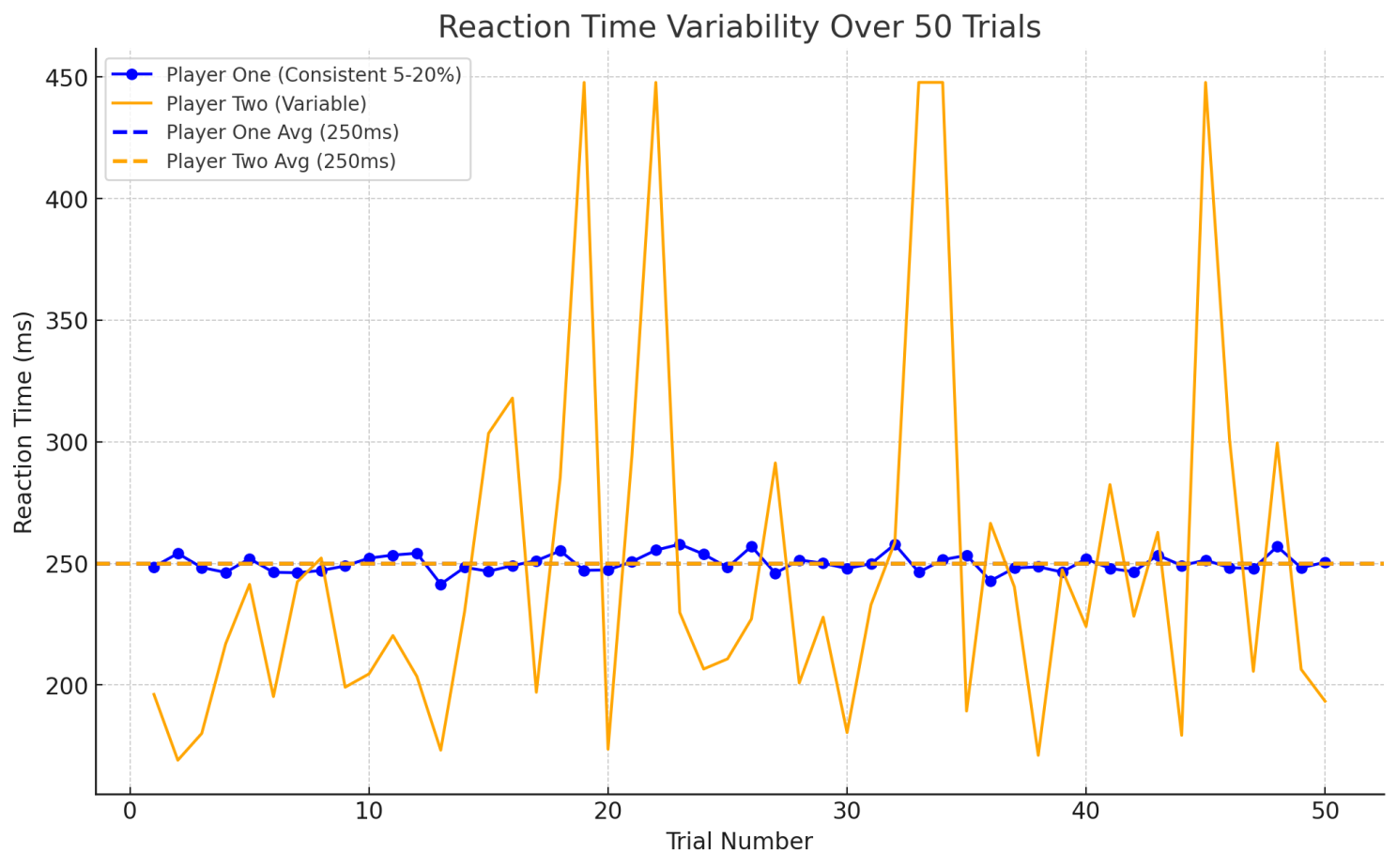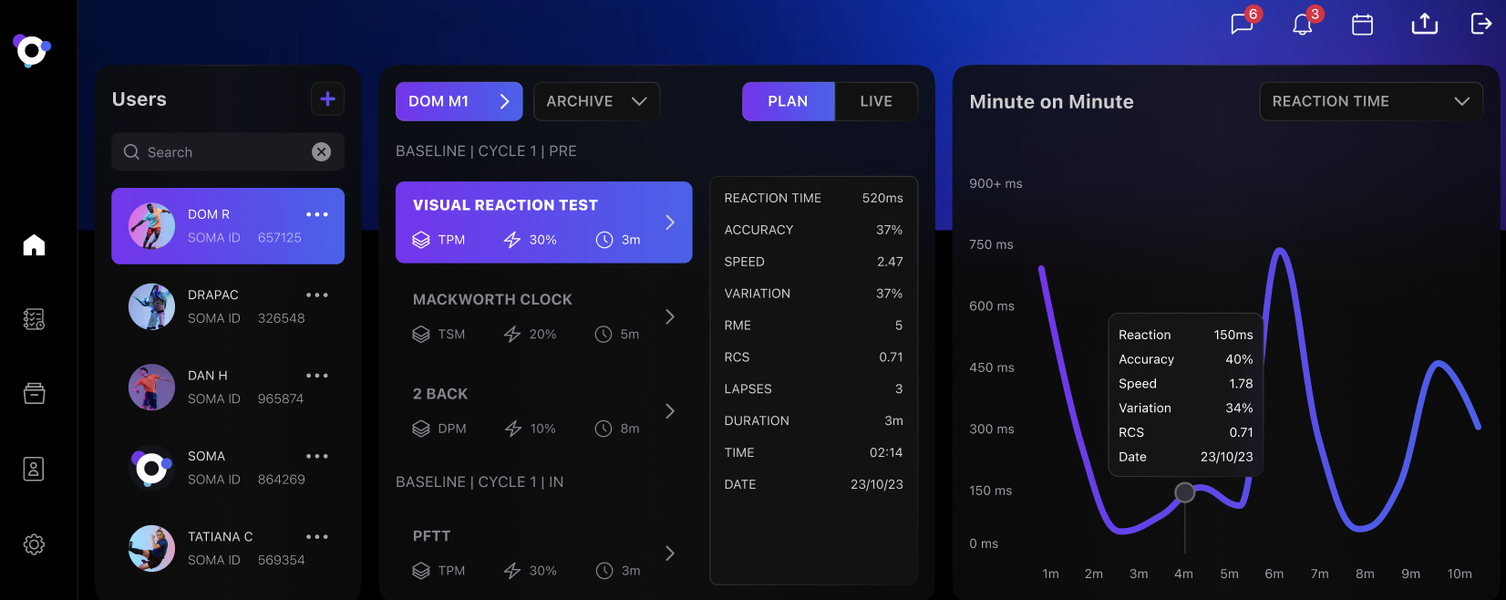When Every Second Counts In Sports

Picture this: You’re watching a nail-biter of a game, the crowd is going wild, and everything comes down to the final seconds. It’s moments like these where a fraction of a second can make all the difference. Have you ever thought about what goes into those split-second decisions athletes make? It’s not just about quick reactions; it’s about years of training to shave off those crucial milliseconds. Because, in sports, sometimes that’s all it takes to win or lose.
But, let’s take a step back. It turns out there’s a lot more to the story than just reaction time. Ask any coach or seasoned athlete, and they’ll tell you: the numbers on paper don’t always tell the whole story. Sure, being quick is important, but it’s just one piece of the puzzle. High-performance sports analytics are now looking at a whole range of factors to get the full picture of an athlete’s abilities.
So, whether you’re trying to up your own game, you coach others, or you just love diving deep into sports science, you’re in the right place. We’re about to explore beyond just quick reactions. We’re talking speed, consistency, you name it – all the things that give us a bigger, clearer picture of what makes an athlete truly stand out.
Getting to Grips with Reaction Time
Let’s talk about reaction time in sports. It’s like that superpower every athlete wishes they could master overnight. Imagine you’re in a game, and in a split second, you need to make a move that could win or lose the match. That instant response, right when a starter pistol goes off or when a soccer ball is suddenly coming your way, that’s reaction time. It’s all about how quickly you can detect something’s happening and react to it. And yes, we measure it in milliseconds because, in sports, every tiny bit counts.
But what really is reaction time? It’s that moment between hearing the starter’s gun and taking off on a sprint. It’s the brief pause between seeing a goalie dive for a penalty kick and the actual dive. Essentially, it’s the time it takes for an athlete to go from “Oh, I need to move” to actually moving.
For a long time, everyone’s been obsessed with making this reaction time as short as possible. And it makes sense, right? The faster you react, the better your chances of outperforming your opponent. But here’s the catch: reaction time isn’t the whole story. Yes, being quick is great, but what about making the right move? If your fast reaction isn’t the correct one, then it’s not really helping.
This is where we start to think bigger. Reaction time gives us a peek into an athlete’s speed, sure. But it doesn’t say much about how well they make decisions under pressure, how consistent they are, or how they handle the intensity of competition. To get a full picture of someone’s athletic ability, we need to look at the entire athlete, not just the milliseconds it takes for them to start moving.
So, as we move forward, let’s broaden our horizons. We’re going to dive into what happens after that initial reaction. How do athletes keep up their performance? How consistent are they from one game to the next? How can they train to not only be faster but smarter and more dependable competitors?
Why Averages Don’t Tell the Whole Story
Now, when we start talking about making athletes better, a lot of the time, we jump straight to looking at averages. You know, like “What’s the average reaction time?” Coaches love these numbers. They dig through them, hoping to find the secret sauce that shaves off a fraction of a second from an athlete’s response time. But here’s a little insider info: averages can be pretty sneaky.
Imagine you have two basketball players, and both have an average reaction time of 250 milliseconds. Sounds pretty good, right? But let’s say Player One is super consistent, always hitting around that 250ms mark. Player Two, on the other hand, is all over the place, sometimes reacting in 200ms and other times taking as long as 500ms. The average says they’re the same. But we know that’s not the whole truth.

That’s the thing with averages; they smooth everything out. They don’t show you the games where an athlete was a bit slower than usual or those days when they were on fire. It’s like looking at a mountain range and only talking about the average height. Sure, it gives you an idea, but it misses all the peaks and valleys that make the view breathtaking.
In sports, it’s not just about those average numbers. It’s about knowing you can count on an athlete to deliver a stellar performance when it really matters, not just in a controlled test. It’s about how they handle the pressure, the noise, the intensity of the moment. That’s what separates the good from the great.
So, yes, averages have their place. They’re a starting point. But to really understand and improve an athlete’s game, we need to look at the whole picture: the range, the consistency, the reliability. That’s where we start seeing the real potential for growth.
Rethinking Speed: Data Normalization in Cognitive Performance
When it comes to understanding an athlete’s cognitive abilities, one of the key metrics we look at is speed. But not just any speed—we’re talking about the kind that comes from the brain: the quickness of an athlete’s reaction to a stimulus. This is where the real magic of sports science shines, particularly through a process known as data normalization. Let’s dive into why this is a game-changer for assessing cognitive performance.
Data Normalization: The Fine-Tuning of Metrics
In the domain of human performance, outliers are more common than you might think. Whether it’s an exceptionally fast reaction due to an adrenaline spike or a sluggish response because of fatigue, these outliers can throw off our understanding of an athlete’s true capabilities. That’s where data normalization steps in. This statistical method adjusts the raw data, minimizing the impact of those outliers and giving us a clearer, more accurate picture of an athlete’s speed.
Speed Beyond the Surface
Once normalized, speed becomes an even more powerful metric. It goes beyond merely showing how fast an athlete can react; it reveals the consistency and stability of their performance over time and across different conditions. This is crucial for a comprehensive understanding of an athlete’s cognitive performance and plays a pivotal role in developing targeted training programs aimed at enhancing both their reflexive responses and decision-making speed.
Why It Matters
In the competitive world of sports, every millisecond counts. But it’s not just about being fast; it’s about being consistently fast, reliable, and adaptable. Normalized speed metrics allow coaches and athletes to pinpoint areas of strength and opportunity, tailoring training to improve not just physical but cognitive performance as well.
By embracing data normalization, we’re not just chasing numbers. We’re pursuing a deeper understanding of what makes an athlete truly great: the perfect blend of speed, consistency, and the ability to rise to the occasion, no matter what challenges come their way.
Embracing Variability: The Key to Consistency
When we talk about an athlete’s performance, it’s easy to get hung up on how fast or strong they are. But there’s a hidden gem that often gets overlooked: variability. You see, being consistently good is better than being occasionally great. Let me break it down for you.
Understanding Variability
Variability is all about how much an athlete’s performance changes from one moment to the next. Think of it like your favorite coffee shop. If the coffee tastes amazing one day and just okay the next, that’s high variability. But if it’s pretty good every single time, that’s low variability. In sports, we want that “pretty good every single time” – it means you can count on the athlete when it matters most.
Why Low Variability Rocks
Here’s the thing: sports aren’t played in a vacuum. Conditions change, pressure mounts, and the unexpected happens. An athlete with low variability in their reaction times, for example, is like a rock in the chaos. They’re reliable, predictable, and, frankly, a coach’s dream. It’s not just about having a good day; it’s about having a good day, every day.
Spotting High Variability: A Red Flag
Now, high variability isn’t necessarily bad, but it’s a bit like rolling the dice. Sure, you might get lucky and roll a six when you need it, but can you do it every time? An athlete with high variability might be a superstar one day and underperform the next. It’s risky business, especially in high-stakes situations. It might indicate issues like inconsistent training, poor focus, or even underlying health problems.
Training for Consistency
So, how do athletes reduce variability? It’s all about consistency in training, recovery, and patience. It means practicing not just until you get it right, but until you can’t get it wrong. It’s about building routines that support peak performance and mental resilience, ensuring that even on a bad day, you’re still better than most.
The Bigger Picture
In the end, reducing variability isn’t just about improving an athlete’s stats; it’s about enhancing their reliability on the field, court, or track. It’s about making sure that when the game is on the line, they’re ready to deliver, just like they always do. That’s the true mark of excellence in sports.
Wrapping It Up
So, what have we learned from peeling back the layers of athletic performance? It’s clear that being a great athlete is about more than just having fast reflexes. Yes, those split-second reactions are crucial, but they’re just one part of a much bigger story. Being consistently reliable, making fast accurate decisions under pressure, and being adaptable to changing conditions play a huge role too.

Soma Update Announcement
We’re excited to announce that the latest version of Soma is set to debut next month. Our team has dedicated the past several months to enhancing both the user interface and overall experience. This upgrade is designed to streamline data analysis and program development for coaches, centralizing all crucial data on a single page and introducing a dedicated page for plan construction. This means coaches can access everything they need at a glance.
Following the launch of the updated Soma Analytics, we’ll move forward with enhancing Soma NPT. This update will incorporate new features, including live chat and live notifications within the coach’s analytics dashboard, fostering immediate communication with athletes.
With the launch of the new Soma Analytics, we will introduce a price increase for all new sign-ups.
However, existing coaches will continue to enjoy their current subscription rate as long as their subscription remains active. For those looking to secure the current rate before the increase, now is the opportune moment.
Should you have any inquiries, please feel free to reach out to us via email or through our chat bot for assistance.
About the Author:

Grant Hayes is the owner of Soma Technologies a leading cognitive performance training platform used and trusted by professional athletes, military and universities around the world.



